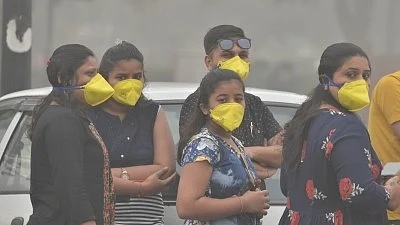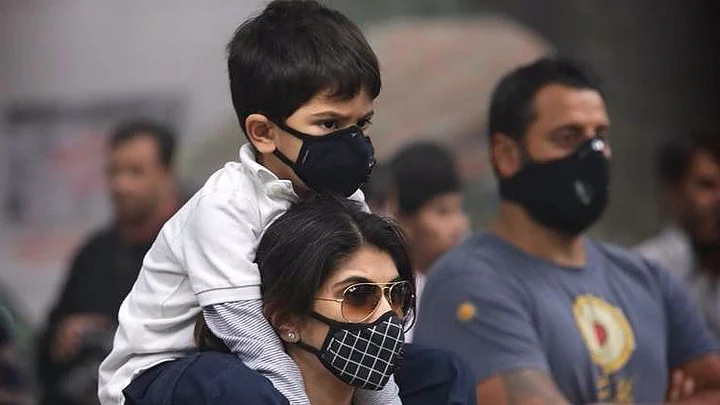With every 10 microgram/metre cube increase in exposure to PM2.5 pollutants, the prevalence of anaemia in women increases by 7.23 percent, a study led by scientists at the Indian Institute of Technology Delhi states.
Anaemia is a disease that occurs when a person has low levels of blood haemoglobin or fewer red blood cells, due to which the blood’s oxygen-carrying capacity reduces. Its symptoms might include lethargy, weakness, fatigue, etc.
What Is PM2.5?
PM2.5 are particulate matters (or pollutants) that have a diameter of 2.5 micrometre or smaller. These can be either solid particles or liquid droplets, which, upon entering the human body, can cause health problems.
What Does the Study Say?
The study, titled Reducing the Burden of Anaemia in Indian Women of Reproductive Age With Clean-Air Targets, used data from the National Family Health Survey-4 (2015-16) and National Sample Survey Office to find the link between pollution and anaemia. It was published in the Nature Sustainability journal in August this year.
The NFHS-5 data showed that anaemia in women aged 15-49 increased from 53.1 percent in 2015-16 to 57 percent in 2019-21, which is one of the highest numbers globally.
Not only that, but anaemia in pregnant women in the same age group also increased from 50.4 percent in 2015-16 to 52.2 percent in 2019-21.
The study’s findings suggested that anaemia among women of reproductive age could reduce from 53 percent (NFHS-4 data) to 39.5 percent if India’s clean air targets are achieved. This would take 186 districts below the national target.
The study says:
“Long-term exposure to ambient fine particulate matter (PM2.5), a type of air pollution, may increase the prevalence of anaemia through systemic inflammation. For every 10 µg m−3 increase in ambient PM2.5 exposure, the average anaemia prevalence among Indian WRA increases by 7.23% (95% uncertainty interval, 6.82–7.63).”
It added, “Among PM2.5 species, sulphate and black carbon are more associated with anaemia than organics and dust. Among sectoral contributors, industry was the greatest, followed by the unorganised, domestic, power, road dust, agricultural waste burning and transport sectors.”
However, the study also adds that it is important to analyse which PM2.5 particles actually can cause anaemia or other health-related issues, so that measures can be taken to control the damage.
Why Should You Care?
How Are Anaemia and Air Pollution Even Related? Dr Neha Rastogi, Consultant, Infectious Diseases and Haemotology, at Gurugram’s Fortis Hospital, explains that chronic exposure to air pollution and finer pollutants actually impact the body in three ways, ultimately resulting in anaemia:
Bone marrow suppression: The PM2.5 pollutants directly attack the manufacturing unit of the blood cells, the bone marrow, and its suppression can reduce the production of blood cells.
Reducing our body’s sensitivity to protein erythropoietin: Erythropoietin helps in the production of red blood cells in our body. But air pollution can decrease our body’s sensitivity to this protein. So even if haemoglobin is being produced, our body won’t be able to process or use it.
Air pollution also increases the amount of a negative regulatory protein in our body, which stops our body from effectively using other proteins.
Dr Vikas Deswal, Senior Consultant, Internal Medicines, Medanta Hospital, adds that women in the reproductive age group, pregnant women in their third trimester, and children are the most at-risk groups when it comes to air pollution-induced anaemia.
Says he, "It's because exposure to toxins leads to a chronic inflammatory stage that can cause the reduction of haemoglobin."
Why Is the Risk Higher in Women?
Air pollution apart, women are anyway more prone to anaemia than men. This is because due to various reasons, women generally have iron and vitamin deficiencies, says Dr Rastogi.
When air pollution comes into the picture and pollutants enter your lungs, they cause inflammation, which not only causes anaemia but other diseases as well.
Air pollution-induced anaemia can cause other health problems in women as well. According to Dr Rastogi, these include:
Risk of low birth weight babies being born is 30 percent higher than usual if the woman is exposed to chronic pollution throughout pregnancy
The growth and health of the foetus are impacted
Cardiac issues such as heart failure
Cardiovascular and respiratory issues such as bronchitis, asthma, and rhinitis
Allergic reactions, cough, and seasonal fever
Can This Be Prevented?
There are certain things that women can do to safeguard themselves from air pollution (and in turn anaemia as well), but the larger and more effective steps need to be taken on a governance level, says Dr Rastogi.
However, things that can help in smaller ways are:
Get your haemogolobin levels checked frequently
Wear masks and use a sanitiser
If you feel weakness and fatigue, start screening for haemoglobin and anaemia
Use air purifiers at home
Taking a good healthy nutritious diet that is rich in iron, such as green leafy vegetables, grains, fruits, pulses, juices, etc
Intake of iron supplements
“COVID-19 has taught us a lot, and we need to keep those lessons going through pollution too because this is a pandemic in itself.”Dr Neha Rastogi, Consultant, Infectious Diseases and Haemotology, at Gurugram’s Fortis Hospital
Anaemia is treated in terms of what triggered it. Since air pollution-induced anaemia is usually caused by the suppression of erythropoietin, it can be treated by including iron and vitamin B12 in your diet and having a more nutritious diet in general, say doctors.
(At The Quint, we question everything. Play an active role in shaping our journalism by becoming a member today.)





